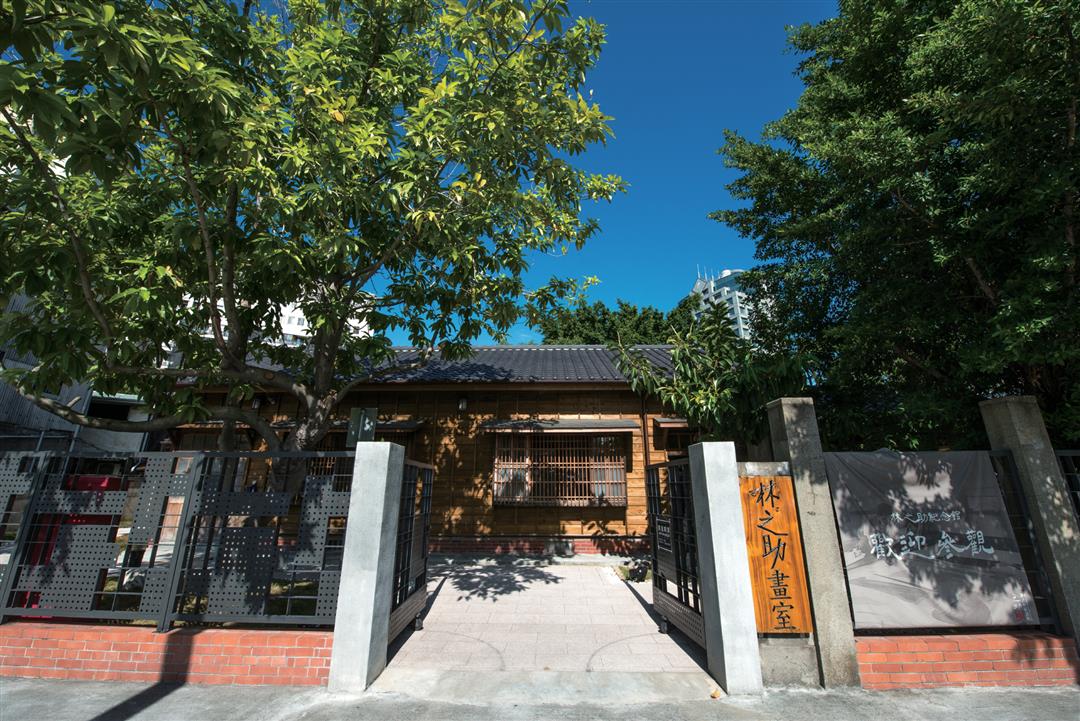One heart, one mind
The old home of Wu Zhuoliu (1900–1976) in Hsinchu’s Xinpu Township is a sanheyuan (a traditional home built around three sides of a courtyard) situated between blue skies and golden rice paddies.
Known as the Zhide Tang, the home is also the site of the Wu family’s ancestral hall. The old sanheyuan has experienced numerous changes since it was first built in 1840, including several renovations prior to its 2009 restoration. Wu Zaiyao, a seventh-generation member of the Wu family and Wu Zhuoliu’s great-nephew, currently manages the property. Zaiyao was unwilling to see the historically and culturally rich home fall into ruin and hoped to make the public more aware of his great-uncle’s literary contributions. He therefore contacted other family members and, with the help of the Hsinchu County Cultural Affairs Bureau, first arranged the building’s restoration and then opened it to the public in 2011.
Wu Zhuoliu built his literary foundations as a boy in the house. His literary awakening came early, inspired by a childhood spent living with his grandfather, poet Wu Fangxin, in a small room at the front of one wing of the home. Wu Zaiyao says that his great-uncle’s poetry is “like a diary in verse,” filled with travels and visits with friends.
Wu taught at several schools in Hsinchu and Miaoli after graduating from normal school, and worked as a journalist in Nanjing during World War II. He experienced the period of Japanese rule in Taiwan, the island’s return to Chinese rule, and the February 28 Incident, and produced numerous works of fiction informed by social realism and criticism. Works such as Orphan of Asia, The Fig Tree, and Taiwan Forsythia offer eyewitness accounts of Taiwan’s recent history and depict the sense of rootlessness that many Taiwanese had during that period.
Wu founded Taiwan Literature and Arts magazine in 1964, and through it fostered the early development of many well known writers, including Chung Chao-cheng, Qideng Sheng, and Huang Chun-ming. In 1969, he used his pension fund to establish the Wu Zhuoliu Prize for Literature, an award that continues to provide encouragement to young Taiwanese writers today.
In 1976, Wu decided to turn the old family home into an archive for Taiwanese literature, with the idea that he would fill it with the work of Taiwanese writers. Wu Zaiyao still remembers his great-uncle happily describing plans to paint bookcases and fit them with glass doors, and to transform the space into a treasury of Taiwanese letters. Unfortunately, Wu Zhuoliu passed away from an illness in October of that same year, long before the bookshelves could be filled.
A similar passion for literature compels the 78-year-old Wu Zaiyao to continue overseeing the old home by himself and without pay. Nowadays, the residence holds regular exhibitions aimed at introducing the public to Wu Zhuoliu’s life, displaying his work, and inviting visitors to read it. The Hsinchu County Cultural Affairs Bureau established an exhibit on Taiwanese authors in the home in November 2016, furthering Wu Zhuoliu’s lifelong mission.
Wu Zaiyao has also extended an open invitation to individuals and institutions to organize activities at the home aimed at informing the public about his great-uncle’s life and dedication to Taiwanese literature.

The wooden Lin Chih-chu Memorial rises against a backdrop of blue skies and green trees, forming an oasis of quiet in the bustling modern world.